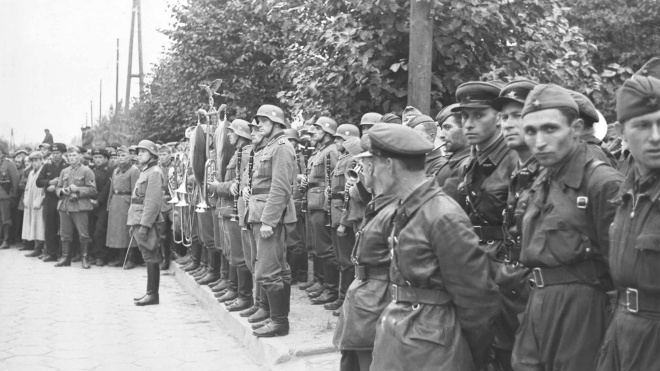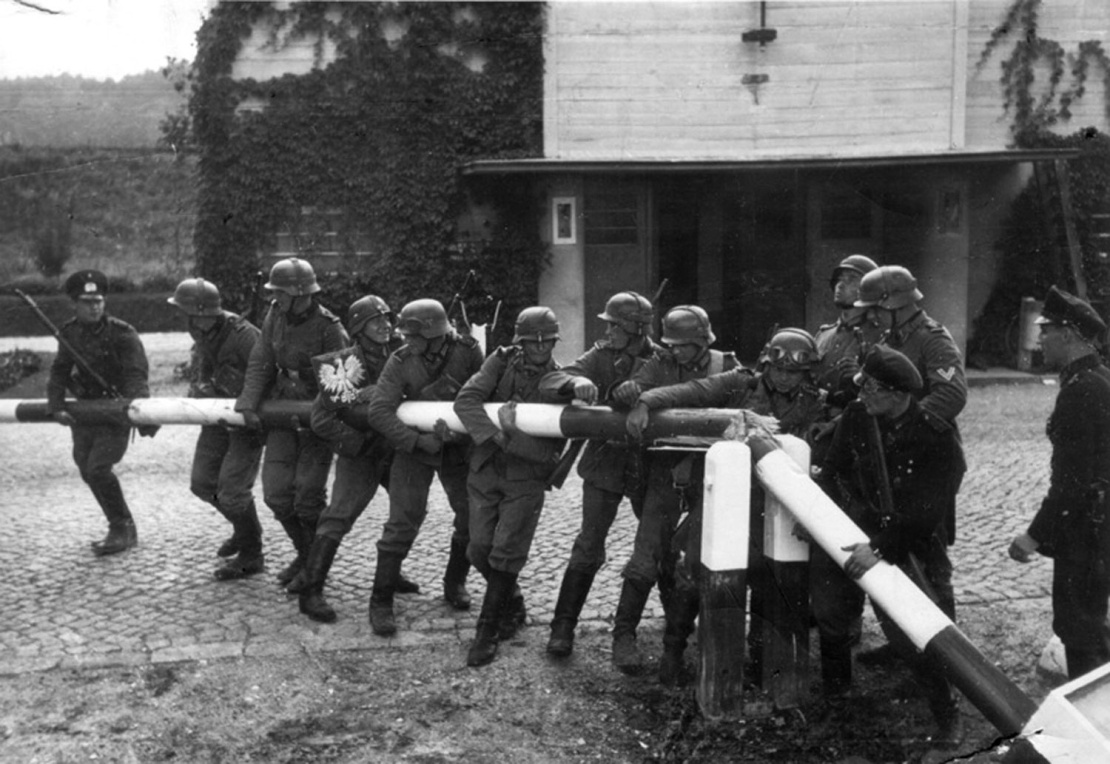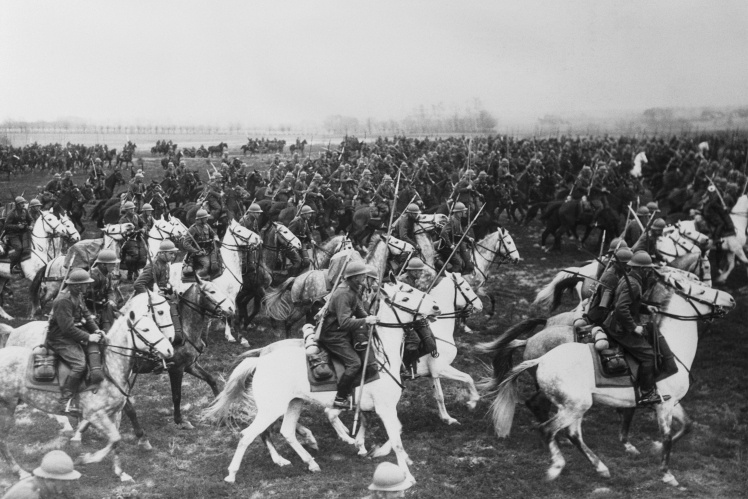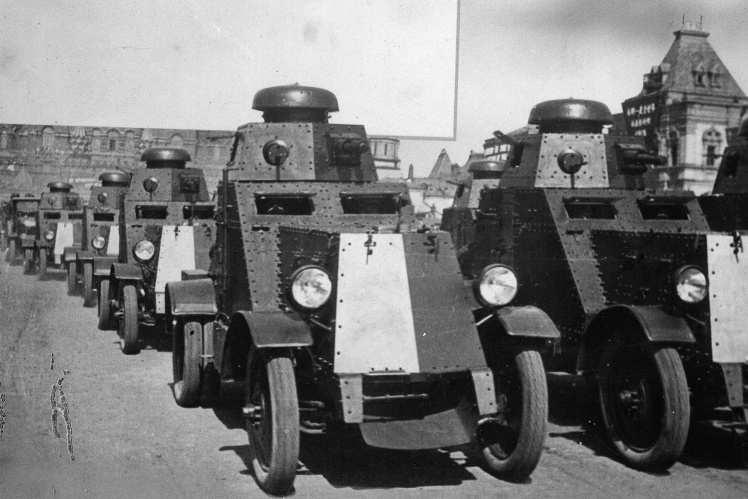On September 1, 1939, German troops invaded Poland. In order to create a pretext for the attack, on the evening of August 31, 1939, SS units staged a Polish attack on a German radio station in the border town of Gleiwitz. On the picture: German soldiers break the Polish border barrier in Sopot near the Bay of Gdańsk, September 1, 1939.
Wikimedia
The German army outnumbered the Polish army in terms of the number of soldiers and especially military equipment. On the picture: German tanks accompanied by motorized infantry during the invasion of Poland, September 1, 1939. On the picture: Polish cavalry advancing towards German troops, September 1, 1939.
Despite fierce battles, the Polish army was forced to retreat to Warsaw with heavy losses. On the picture: captured Polish soldiers after the surrender of the Westerplatte naval base near Danzig, September 7, 1939.
At 6 oʼclock in the morning on September 17, 1939, about 600 000 Soviet soldiers invaded Poland from the east, while the bulk of the Polish army tried to hold back the German advance from the west. On the picture: Soviet soldiers crossing the Polish border, September 17, 1939. On the picture: a column of Soviet mobile armored vehicles on the border with Poland on the day of the invasion, September 17, 1939.
The Polish army could not fight on two fronts, so the Soviet troops occupied the eastern territories of then Poland in a few days. On the picture: the first meeting of German and Soviet vanguard officers after the invasion of Poland, September 19, 1939.
On September 14-17, 1939, German troops occupied the city of Brest, which at that time was part of Poland. On September 20, Soviet units of General Semyon Kryvosheinʼs tank brigade approached the city. Negotiations began to transfer Brest under the control of Soviet troops, since it was part of the "sphere of influence" of the USSR under the Molotov-Ribbentrop Pact. On the picture: Soviet political worker, battalion commissar Philip Borovensky (in the center in a leather cloak) during negotiations with German officers in Brest, September 20, 1939.
By September 22, 1939, the negotiations were settled. On the same day, a joint parade of Soviet and German troops took place in Brest. On the picture: German General Heinz Guderian (left) and Semyon Kryvoshein are on a pedestal in the first row, receiving a parade in Brest, September 22, 1939.
Wikimedia
A Soviet tank column passes a group of German motorcyclists during a parade in Brest on September 22, 1939. In the foreground is the Red Army T-26 command tank of the 1933 model.
Wikimedia
The German and Soviet command discuss the details of holding a joint parade in Brest under the portrait of the head of the USSR Joseph Stalin, September 22, 1939. General Guderian (in the center) and Brigadier General Kryvoshein (right) understood each other perfectly and had a conversation without an interpreter. Both knew French well. Photo during the parade in Brest, September 22, 1939.
Wikimedia
Similar joint parades took place in other cities. But the event in Brest was filmed in detail by German propagandists. So Germany wanted to show England and France that the USSR was its ally. In the Union itself, the parade was not advertised and was called a "solemn march" or "ceremonial procession." On the picture: Soviet and German soldiers during a joint parade in Brest, September 22, 1939.
Wikimedia
In 1940, NKVD bodies shot more than 20 000 Polish citizens and prisoners of war. One of the places of mass executions is the Katyn forest in the Smolensk region. The Soviet leadership denied its involvement in this war crime until 1990. On the picture: a mass burial in the Katyn forest, which was found by the Germans after the occupation of the Smolensk region in 1943.
Soviet textbooks distorted history, and we write based on facts. If you want more such materials, support Babel: 🔸 in hryvnia , 🔸 in cryptocurrency , 🔸 Patreon , 🔸 PayPal: [email protected].







